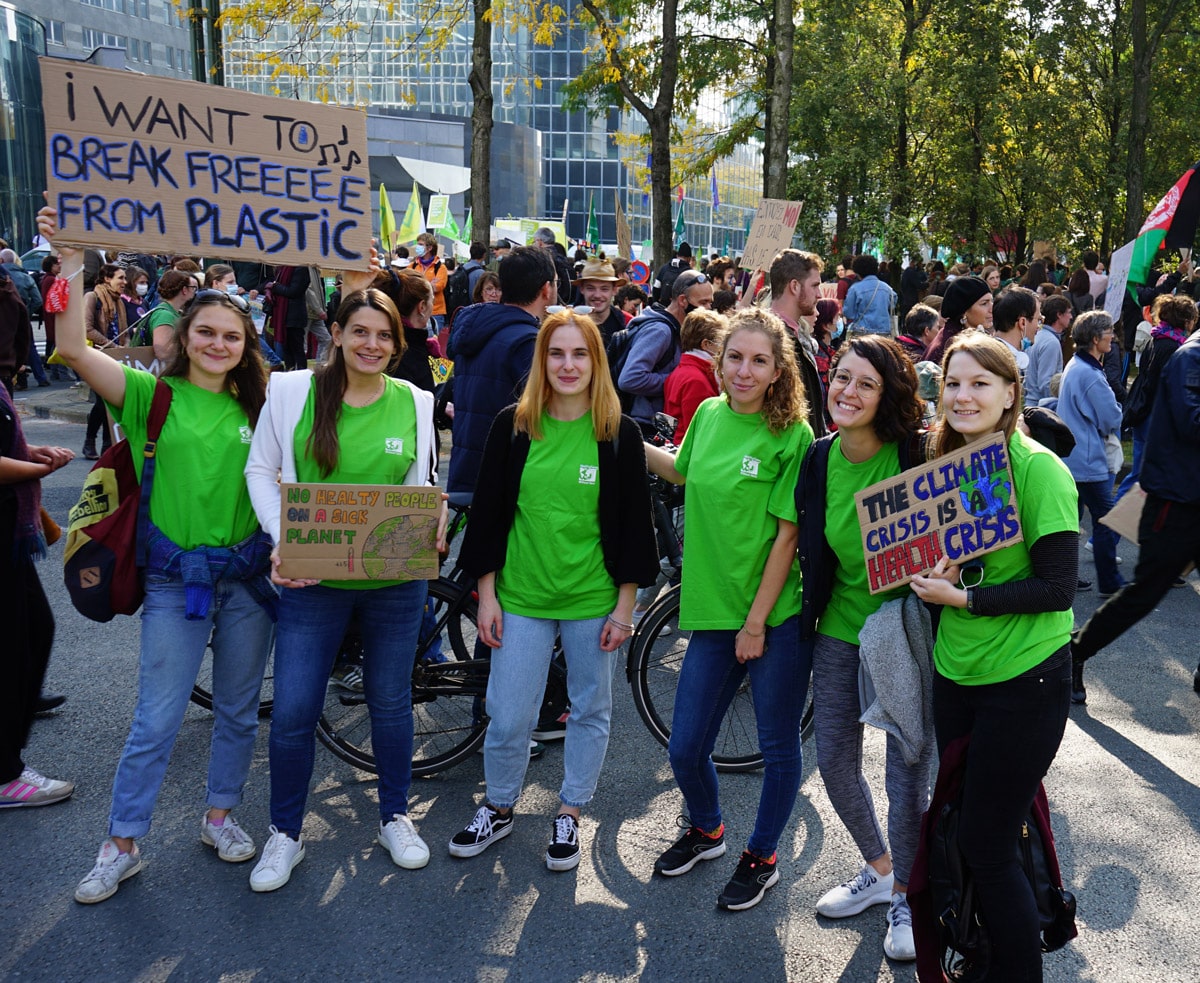Please introduce yourself(-ves) and your organisation?
I am Andreea Zotinca, Circular Healthcare Project Officer at Health Care Without Harm Europe. Our organisation exists to create a more sustainable healthcare sector. One of the promises within the Hippocratic Oath that doctors take is to “first do no harm” – so we want healthcare to do no harm to patients AND to our planet. Our Brussels-based team is working to reduce the healthcare sector’s environmental impact and our network of sustainable healthcare leaders and healthcare facilities reaches across Europe.
Why is plastic pollution an important issue for your organisation? What’s the story?
Plastics represent a significant risk to human health, so addressing this issue is very important for the healthcare sector. Yet in recent decades the sector itself has shifted to an over reliance on plastic single-use items. This move has been partly driven by a misleading simplification that disposable products always reduce contamination risk. The risk is nonetheless highly dependent on the item and procedure, and it is sometimes negligible to begin with. In some cases, there is a generational divide; some older professionals will remember using reusable healthcare items and often prefer them for their better quality and durability., Whereas younger healthcare staff have spent their whole careers using single-use items.
Patient safety always remains the top priority, so unless viable alternatives exist single-use plastic items will continue to be needed in healthcare. Nonetheless, reducing unnecessary plastic use is better for patients, the planet, and budgets, and there are many opportunities for doing so.
Healthcare’s dependence on single-use items is also a question of resilience. During the COVID-19 pandemic, we have seen serious supply chain shortages, partially due to the sector’s reliance on a steady stream of single-use items. To overcome supply issues, we have seen several hospitals switch to reusable gowns instead of disposables, for example, and many of them wish to continue working with more sustainable reusable options.
We work with healthcare professionals who can inspire change through informing their communities about the environmental and health issues of plastics as well as the actions needed to reduce the impact of plastics. We have members educating new parents on avoiding plastic for their children, such as storing food in reusable glass containers or using reusable nappies. More hospitals can engage in similar conversations with their communities and make an immense impact in reducing plastic!

Tell us more about your ongoing campaigns and activities
Through our project, Towards plastic-free healthcare in Europe, we are addressing unnecessary plastic use in healthcare and encouraging a model that prioritises reducing and reusing products as well as promoting toxic-free alternatives. We are working directly with hospital partners in conducting plastic waste audits and procurement surveys to assess the plastic items used most in healthcare. You can find more information and resources on our project page.
Our recent publication, Measuring and reducing plastics in the healthcare sector, builds on the experiences of our project partners and provides healthcare professionals with strategies and tools to address plastics in their practice, and it also includes a plastic waste audit methodology. The report features case studies in healthcare plastic reduction from across the world and explains how the waste hierarchy can be applied in healthcare. The publication will soon be available in Spanish and Portuguese, bringing these tools to a wider audience.
There are many non-medical plastics in healthcare, such as food contact materials, and some healthcare facilities may find them easier to tackle initially compared to healthcare products. Our publication, Sustainable food contact materials in healthcare, highlights successful case studies of hospitals reducing the unnecessary use of single-use plastics in their food services.
As in many sectors, there is also a tendency within healthcare to place too much emphasis on recycling or bio-based/”biodegradable” alternatives. In the future, we would like to raise awareness on real solutions for healthcare professionals, procurers, and sustainability teams.
Healthcare professionals are a trusted voice that can inspire change and inform their communities about the environmental and health issues surrounding plastic use and the actions needed to reduce impact.
When did your organisation become a core member of BFFP? What difference has being a part of Break Free From Plastic made for you?
We have been a member of Break Free From Plastic from the very beginning: 2016. BFFP provides us with a whole network of experts who do amazing work on reducing plastic. It is not only a source of information but also a way to keep us motivated and inspired! It is also great to have opportunities to participate in the wider movement of plastic reduction through joint advocacy work.
What is the most ridiculous plastic product or packaging that you have seen?
Single-use medical clothing is actually used a lot in some healthcare facilities, even though safe reusable alternatives exist and are already used across Europe!
Just a few days ago we found out about another ridiculous plastic product that we never knew existed: single-use curtains! Some suppliers advertise them as environmentally friendly because they reduce the amount of water and energy used in washing reusable ones. With a lot of cleaning facilities closing down, some hospitals are unfortunately resorting to these alternatives.

What do you find shocking in the plastic waste landscape that you think everybody should know about?
Some medical items are labelled as ‘single-use’ even though they could be safely reused, as it is easier and more profitable for manufacturers. From a regulatory perspective, labeling a medical item as ‘single-use only’ requires less effort, as they don’t need comprehensive testing to prove that it can be reused. Items that can be safely reused are therefore often labeled as ‘disposable’ to speed up market access.
Apparently, there are also some strategies adopted by manufacturers to prevent the reprocessing (reuse) of their products, such as covering critical pieces of the device in glue to prevent disassembly, designing unnecessary holes or creases to impede cleaning.




